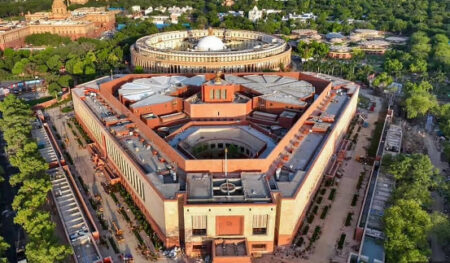LATEST DISCOVERY OF BLACK HOLE
India’s Astrosat space telescope has witnessed the birth of a black hole for the 500th time as stars collapse onto themselves to form the mysterious object in deep space on 21st May 2022.
A black hole is a place in space where gravity is so strong that even light cannot escape its pull. According to Nasa, the gravity in black holes is so strong because matter has been squeezed into a tiny space. This can happen when a star is dying.
The Inter-University Centre for Astronomy and Astrophysics (IUCAA) has said that India is making great headway in studying the birth of these black holes using the spacecraft. Professor Varun Bhalerao, who leads the search for black holes, said that the spacecraft has been studying Gamma-Ray Bursts (GRB) since it first opened its eyes 6.5 years ago. IUCAA said that the Cadmium Zinc Telluride Imager (CZTI) instrument onboard Astrosat has witnessed the birth of black holes for the five hundredth time. “This is a landmark achievement. The wealth of data obtained by CZTI on Gamma-Ray Bursts is making a big impact worldwide,” Prof. Dipankar Bhattacharya of Ashoka University, the current Principal Investigator of CZTI said in a statement.

WHAT IS ASTROSAT ?
Astrosat has been observing Gamma-Ray Bursts (GRB) that happen when a star dies. These explosions are so powerful that they have been called “mini big bangs”, sending intense jets of light and high-energy radiation shooting across the universe.
Astrosat was launched on September 28, 2015, into a 650 km orbit with a mission objective set for five years. The spacecraft has been performing in space beyond expectations.
The scientific objectives of the spacecraft included understanding high energy processes in binary star systems containing neutron stars and black holes, estimating the magnetic fields of neutron stars, studying star birth regions and high energy processes in star systems lying beyond our galaxy, performing a limited deep field survey of the Universe in the Ultraviolet region and detecting new briefly bright X-ray sources in the sky.

RESULT OF THE DISCOVERY
The latest development comes just weeks after the Event Horizon Telescope collaboration successfully snapped the first picture of the black hole at the center of our own galaxy, the Sagittarius A*, nearly 27,000 light-years away from Earth. Black holes, the ultimate cosmic enigma, have been a subject of intense scrutiny from astronomers from all over the world. However, Indian scientists are making great headway in studying black holes births using the indigenously built space telescope.
Social Media heading
- India see black hole 500th time
- Indian astrosat new discovery
Read More : “Quantum hair” solves Hawkings blackhole paradox













